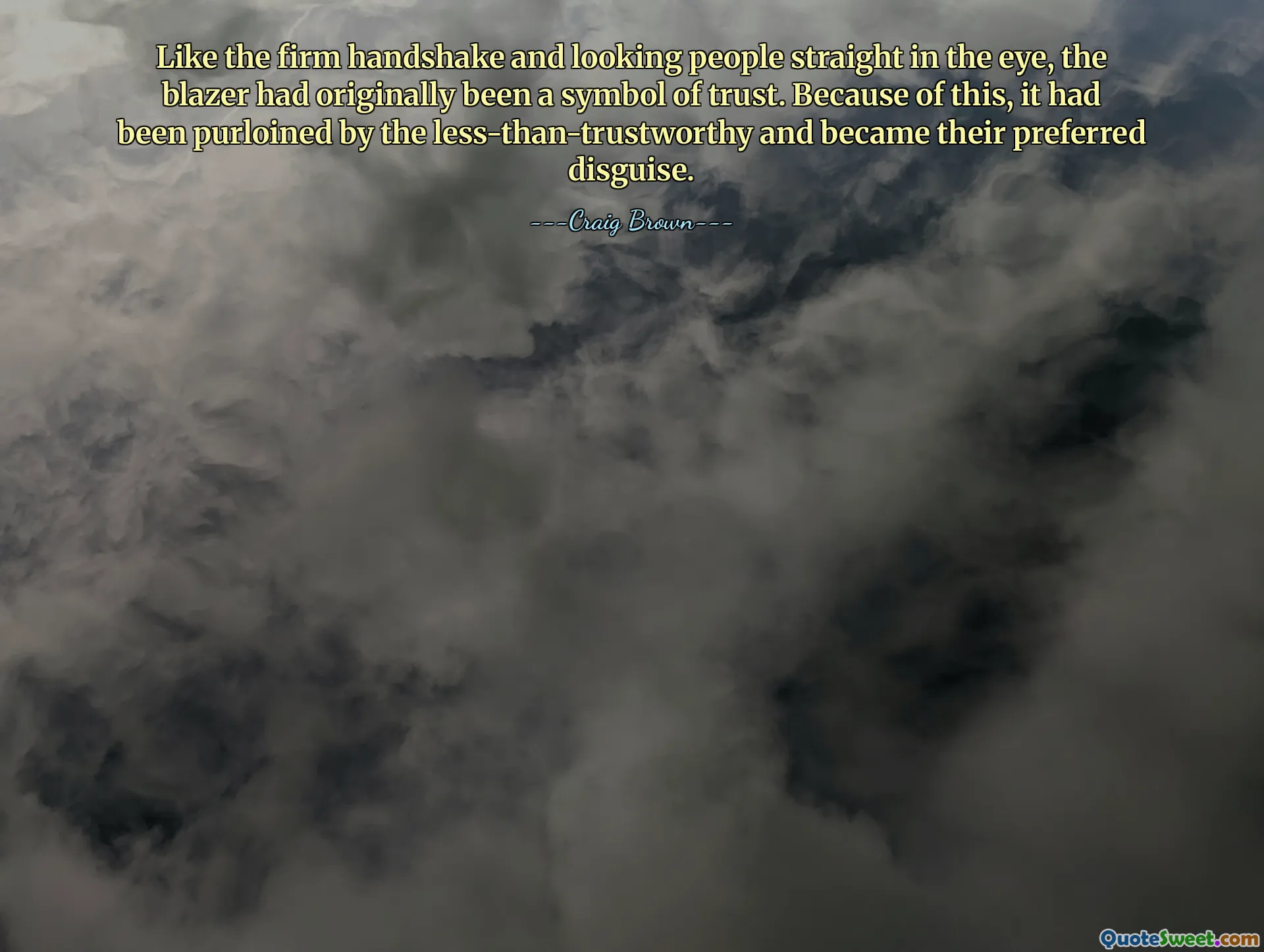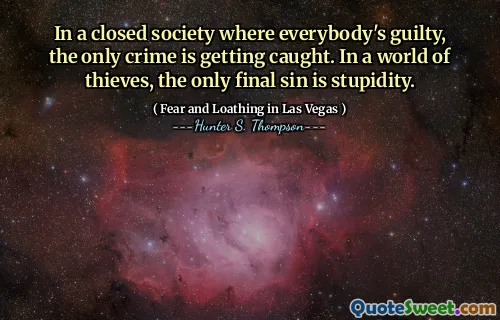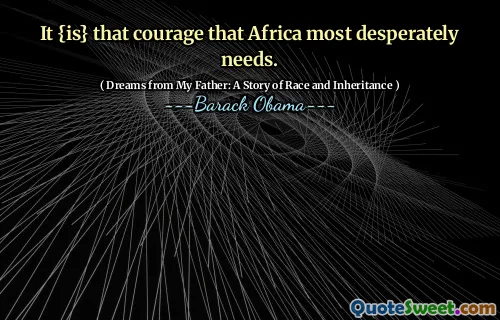
Like the firm handshake and looking people straight in the eye, the blazer had originally been a symbol of trust. Because of this, it had been purloined by the less-than-trustworthy and became their preferred disguise.
This quote illustrates the fascinating ways symbols of integrity and openness can be co-opted by those with less honorable intentions. The blazer, which once stood for professionalism, confidence, and trustworthiness, has been exploited by individuals seeking to project an appearance of reliability while perhaps lacking genuine virtues. This transformation of a symbol underscores how appearances can be deceiving, and how societal symbols often carry a duality—meaning they can both represent and conceal. It prompts reflection on the importance of authentic character versus superficial impressions. In everyday life, people often rely on external cues—like a firm handshake or direct eye contact—as indicators of honesty or trustworthiness. However, this quote reminds us that such gestures and symbols might be manipulated for personal gain. The idea of the blazer being used as a 'disguise' resonates with broader themes about deception, authenticity, and societal perceptions. It encourages a cautious approach to judgments based solely on outward appearances. At a deeper level, it suggests that societal trust is built on symbols that can be easily appropriated or misused, challenging us to look beyond superficial signs and strive for genuine integrity and transparency. Recognizing the historical and cultural significance behind symbols and reinforcing the importance of authentic behavior can foster real trust rather than superficial assurance. Ultimately, it’s a compelling commentary on the fluid and sometimes deceptive nature of symbols within social and cultural contexts.










